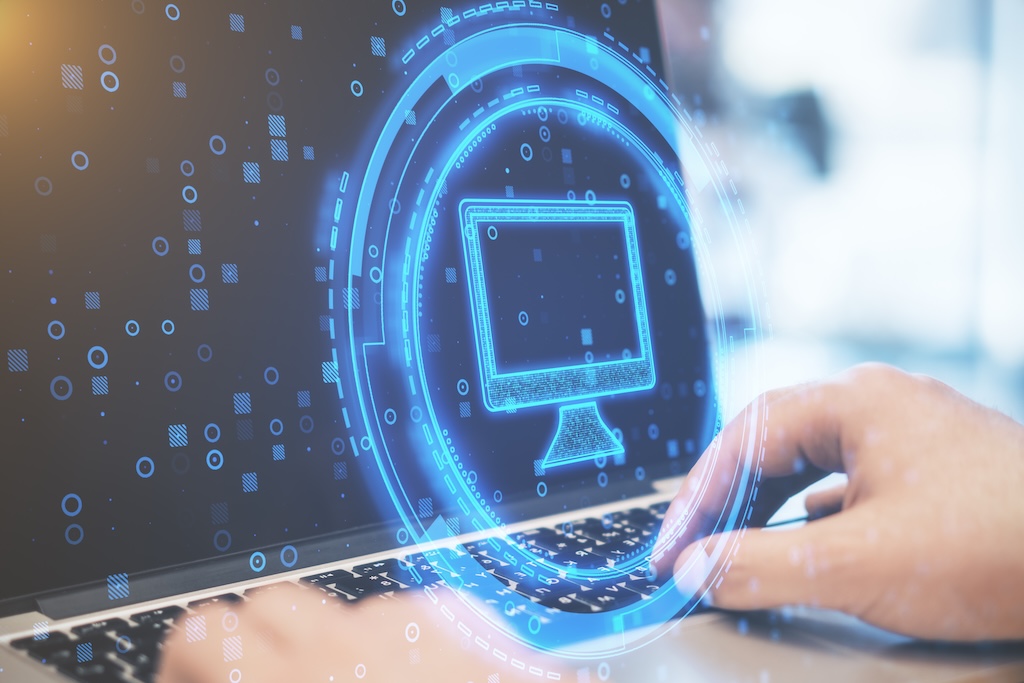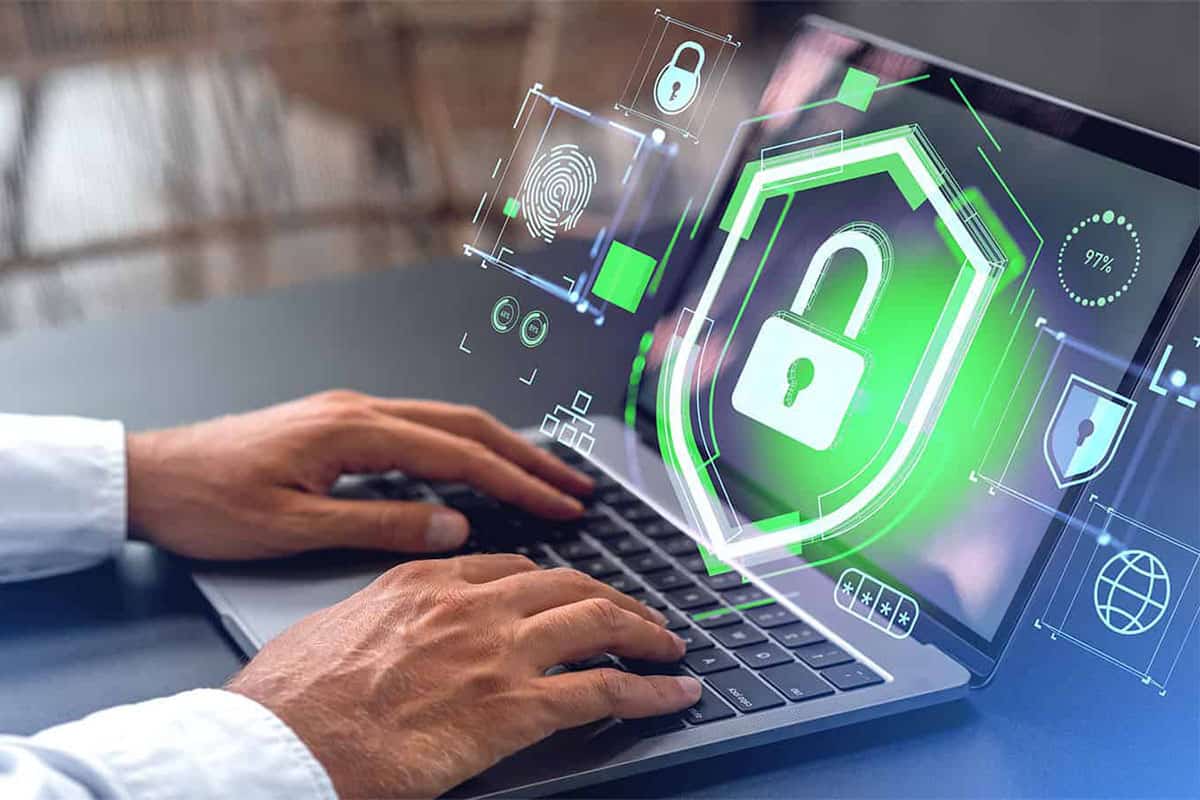Global Regulatory Change Isn’t Waiting...Are Your Compliance Risk Solutions Ready?
According to Thomson Reuters Regulatory Intelligence, in 2021, there were over 64,000 regulatory alerts across 190 countries, highlighting the speed...
18 min read
Heroic Technologies : Dec 27, 2024 3:45:00 PM
In the ever-evolving domain of cybersecurity, recognizing and understanding the dynamic landscape is vital for effective protection against emerging threats. The field of San Jose cybersecurity is rapidly changing, presenting new challenges to local organizations.
Here are some key points to consider:
Strategically, businesses can and should implement proactive techniques that minimize risks and fortify their defenses. The role of cybersecurity is essential when it comes to not just business continuity, but its very survival. If you haven’t already partnered with an MSP that provides an IT help desk in San Jose CA, now is the time to act.
Ransomware has undergone significant transformations over the years, and by 2025, businesses must be prepared for Ransomware 3.0. This advanced iteration represents a shift toward more sophisticated and targeted attacks. Unlike earlier versions that indiscriminately encrypted files, Ransomware 3.0 focuses on exploiting specific vulnerabilities within networks to maximize impact and ransom potential.
The evolution of ransomware can be categorized into distinct phases:
Ransomware 3.0 employs machine learning algorithms to identify valuable targets within organizations, often focusing on critical infrastructure or sensitive data repositories. This intelligence allows cybercriminals to tailor their demands based on the victim’s capacity to pay, increasing the likelihood of successful extortion.
Businesses will face an alarming rise in targeted ransomware attacks that specifically exploit network vulnerabilities. Attackers are increasingly conducting reconnaissance on their targets before launching an assault, identifying weaknesses in security protocols or unpatched software systems.
Common tactics include:
Organizations must prioritize patch management and vulnerability assessments to prevent these types of attacks from succeeding. A proactive approach includes regular penetration testing and automated tools that can identify security gaps.
The rise of ransomware-as-a-service (RaaS) platforms has democratized access to sophisticated cyberattack tools. These platforms enable even low-skilled attackers to launch devastating ransomware campaigns by providing them with user-friendly interfaces and comprehensive support.
Key implications for businesses include:
Organizations need to adopt robust cybersecurity measures against these threats by implementing multi-layered defenses such as endpoint protection, strict access controls, and real-time threat monitoring solutions.
Advanced Persistent Threats (APTs) are highly sophisticated cyber threats that target organizations through prolonged and focused attacks. These threats are known for their stealthy nature and complexity, often involving multiple stages and tactics to gain unauthorized access to sensitive data and systems.
Unlike other cyber-attacks that may be opportunistic or one-time events, APTs are strategic in nature. Attackers carefully plan their approach, combining various methods over an extended period to achieve their objectives.
Key Features of APTs
Here are some key characteristics that define APTs:
Organizations in critical sectors such as finance, healthcare, government, and manufacturing are frequent targets of APT attacks. The value of their data makes them attractive to cybercriminals.
Here are some common methods employed by attackers:
The risk posed by APTs is heightened by the integration of AI-powered attacks. Automated tools can analyze vast amounts of data quickly, identifying weaknesses in target defenses more efficiently than traditional methods. This raises the stakes for businesses as the potential for significant data breaches increases.
To mitigate the risks associated with APTs, businesses must consider implementing a Zero Trust security model. This approach focuses on verifying every user and device attempting to access resources within the organization.
Here are some effective strategies you can adopt:
Integrating these strategies creates a robust defense against advanced persistent threats while strengthening overall cybersecurity posture.
Organizations must remain vigilant against evolving tactics used by cybercriminals, particularly as ransomware attacks become increasingly sophisticated. Implementing proactive measures will ensure businesses are better prepared to defend against these complex threats.
Supply chain attacks are a significant and emerging cybersecurity threat in 2025, as they exploit the interconnectedness of modern business environments. Understanding how these attacks work is crucial for organizations looking to protect their data and systems.
A supply chain attack usually happens when cybercriminals gain access to a company’s network through weaknesses in its suppliers or partners. The attack can take different forms, such as:
The success of these attacks often depends on the trust organizations place in their suppliers. As businesses increasingly rely on external vendors, understanding and addressing risks associated with third-party relationships becomes essential.
To protect against supply chain attacks, businesses must follow best practices for evaluating vendors and monitoring third-party access:
The rapid growth of Internet of Things (IoT) devices in business environments has brought about significant cybersecurity risks. As organizations increasingly use smart devices to improve their operations, the risk of cybercriminals exploiting these devices also increases.
Unsecured IoT devices can be used by intruders to gain access to networks and compromise sensitive data. Here are the main risks:
As businesses become more dependent on these connected devices, the consequences of a security breach can be severe. Cybercriminals may exploit these weaknesses to launch AI-powered attacks, making it even harder to detect and respond to such incidents.
To reduce the risks associated with IoT vulnerabilities, organizations must prioritize firmware updates and implement strict security policies:
The combination of AI-powered attacks and increasingly sophisticated ransomware attacks requires a vigilant approach to securing the growing number of connected devices. Prioritizing IoT security is not just an option; it’s an essential part of a comprehensive cybersecurity strategy that protects organizational integrity and customer trust.
The landscape of cybersecurity threats in 2025 will see a significant evolution in social engineering tactics, particularly through AI-driven approaches. Traditional phishing scams have transformed, as attackers leverage sophisticated technologies to enhance their effectiveness.
To combat these emerging threats, businesses must implement robust employee training programs aimed at enhancing awareness and resilience against such attacks:
Human error remains one of the leading causes of cybersecurity breaches. As threats evolve, continuous education becomes increasingly vital. The proactive approach to cybersecurity focuses not only on technological solutions but also on empowering employees with the knowledge and skills necessary to recognize and respond to potential threats.
Statistics underscore the importance of investing in employee training:
Practical training methods significantly reinforce employee learning. Incorporating simulated phishing tests and hands-on exercises into training programs can yield impressive results.
Simulated Phishing Tests:
Hands-On Exercises:
Regular Updates:
Incorporating Real-Life Examples:
Creating Incentives:
Adopting Multi-Factor Authentication (MFA) is a critical component of proactive cybersecurity strategies for businesses. MFA acts as an effective barrier against unauthorized access and phishing attempts, significantly reducing the risk of data breaches. By requiring users to provide multiple forms of verification before granting access to systems, organizations can enhance their security posture.
Integrating MFA into existing systems requires thoughtful planning and execution. Below are practical steps businesses can follow:
Integrating MFA into business operations strengthens defenses against evolving cyber threats. Through diligent implementation, organizations can establish robust security measures while fostering a culture of cybersecurity awareness among employees. This proactive approach not only mitigates risks but also enhances overall organizational resilience against cyber-attacks.
Investing in cybersecurity tools is a critical component of any organization’s proactive cybersecurity strategy. With the increasing sophistication of cyber threats, businesses must equip themselves with the right resources to protect sensitive data and maintain operational integrity.
The dynamic nature of cybersecurity threats necessitates that businesses conduct regular updates and assessments of their cybersecurity tools. Stagnant security measures can lead to vulnerabilities that attackers readily exploit. Key practices include:
Investing in cybersecurity tools must be accompanied by comprehensive training for employees. Understanding how to utilize these tools effectively is paramount in minimizing human error-related breaches. A well-rounded approach that combines technological investment with robust training programs creates a resilient defense against evolving cyber threats faced by businesses today.
The Zero Trust Security model has emerged as a critical framework for organizations aiming to safeguard their sensitive data and systems. This approach is based on the principle of “never trust, always verify.” It challenges traditional security methods that often rely on perimeter defenses, acknowledging that threats can come from both outside and inside an organization.
The core idea behind Zero Trust is that no user or device should be trusted by default, regardless of whether they are inside or outside the network. Here are the key components of this framework:
As cyber threats continue to become more sophisticated, the importance of Zero Trust becomes clearer. Here are some factors contributing to its growing significance:
Transitioning to a Zero Trust architecture requires a strategic approach. Here are several steps organizations can take to implement this model effectively:
The adoption of the Zero Trust Security model represents a significant change in how organizations approach cybersecurity. By prioritizing verification at every level—user, device, application—businesses can create a resilient framework that stands strong against evolving cyber threats.
The integration of artificial intelligence (AI) and machine learning (ML) into cybersecurity is rapidly transforming how businesses protect their digital assets. As organizations face an increasing number of sophisticated cyber threats, these technologies are emerging as pivotal tools for enhancing threat detection and response capabilities.
AI and ML algorithms analyze vast amounts of data at unprecedented speeds. This capability allows for:
These advancements lead to a more proactive approach in cybersecurity, enabling organizations to address issues before they escalate.
The automation capabilities offered by AI streamline response processes. Key benefits include:
This shift towards automation enhances efficiency while reducing the risk of human error during critical incidents.
The adoption of AI and ML in cybersecurity provides several compelling advantages:
Despite its many benefits, the incorporation of AI into cybersecurity is not without challenges:
Organizations must navigate these challenges carefully to harness the full potential of AI-driven solutions while maintaining robust cybersecurity practices.
The rise of AI complements the Zero Trust Security model, enhancing its effectiveness through improved visibility and control. By leveraging real-time data analysis and automated responses, businesses can continuously verify identities and access requests within their networks. This alignment solidifies defenses against both internal and external threats.
Their role in shaping the cybersecurity landscape will become increasingly vital. Businesses should remain vigilant about adopting these technologies while addressing the associated risks to ensure comprehensive protection against evolving cyber threats.
The shift to cloud storage solutions has transformed how businesses operate, yet it has also introduced significant cybersecurity vulnerabilities. As organizations increasingly rely on the cloud for data storage and management, understanding these vulnerabilities becomes crucial in safeguarding sensitive information.
Here are some common vulnerabilities in cloud storage solutions:
To mitigate these vulnerabilities, businesses must adopt robust security measures tailored to their unique needs. Consider implementing the following strategies:
Addressing these cloud security concerns is vital as businesses navigate the complexities associated with increasing reliance on digital infrastructure. Establishing comprehensive strategies will not only protect sensitive data but also enhance overall organizational resilience against evolving cybersecurity threats.
Quantum computing represents a profound shift in computational power, carrying significant implications for cybersecurity. As this technology evolves, it poses unique challenges that organizations must address proactively to safeguard their sensitive data.
Modern encryption methods underpin the security of data transmission and storage. However, quantum computers have the potential to break widely used encryption algorithms, such as RSA and ECC, by leveraging quantum algorithms (e.g., Shor’s algorithm) that can factor large numbers exponentially faster than classical computers. This capability threatens the confidentiality of encrypted information.
Organizations must consider the following:
The advent of quantum computing necessitates a shift towards quantum-resistant solutions. These alternatives use cryptographic algorithms designed to be secure against both classical and quantum attacks. Businesses should:
Integrating quantum resistance into an organization’s cybersecurity strategy aligns with key trends shaping 2025, such as the adoption of the Zero Trust Security model. This framework emphasizes verification at every access request point, whether internal or external. By adopting Zero Trust principles alongside quantum-resistant measures, businesses create layers of defense against multifaceted threats.
Organizations must recognize the urgency of preparing for quantum computing challenges within their cybersecurity strategies. Emphasizing proactive measures and remaining agile with the latest developments in encryption technologies will position businesses to mitigate risks effectively in an increasingly complex digital landscape.
The world of cybersecurity requires businesses to take proactive steps to stay online and follow best practices. With the growing cybersecurity concerns, organizations need to have strong plans in place to protect their valuable assets to ensure business continuity in San Jose CA. Here are some important actions to consider:
Carry out exhaustive assessments of your security measures. Identify loopholes and rectify them before they can be exploited.
Constant education is imperative. Equip your workforce with insights on contemporary dangers, social engineering methods, and optimum practices to lessen human errors.
Employ state-of-the-art cybersecurity tools like SIEM (Security Information and Event Management) for real-time monitoring. Ensure these tools are frequently updated for continued effectiveness against evolving threats.
Execute this model to validate every user and gadget accessing sensitive data, boosting security at all levels.
Leverage expert services that are in line with standards such as NIST and HIPAA, making certain your organization fulfills compliance norms without exerting pressure on internal resources. In the business continuity in San Jose CA, maintaining alignment with these protocols is imperative.
In 2025, key emerging cybersecurity threats include advanced ransomware attacks, AI-powered attacks, Advanced Persistent Threats (APTs), supply chain attacks, IoT vulnerabilities, and sophisticated social engineering tactics like Phishing 2.0.
Ransomware 3.0 represents a significant evolution in ransomware tactics, characterized by targeted attacks that exploit network vulnerabilities and the rise of ransomware-as-a-service platforms, which enable attackers to launch sophisticated campaigns more easily.
To mitigate APT risks, businesses should implement a zero-trust security approach, continuously monitor their networks for unusual activities, and ensure robust access controls are in place to limit potential attack vectors.
Continuous employee training is vital as it helps mitigate human error-related breaches. Implementing simulated phishing tests and hands-on exercises can significantly raise awareness and preparedness among employees.
Multi-factor authentication (MFA) serves as an effective barrier against unauthorized access and phishing attempts. It requires users to provide multiple forms of verification before gaining access to systems, thereby enhancing overall security.
Advancements in quantum computing pose significant challenges for traditional encryption methods. Businesses need to start adopting quantum-resistant solutions now to safeguard their sensitive data against future quantum threats.

According to Thomson Reuters Regulatory Intelligence, in 2021, there were over 64,000 regulatory alerts across 190 countries, highlighting the speed...

Picture this: your client sends you their tax returns, medical records, and confidential business documents via email. They hit send, the files...
Picture this: It's 11 PM, and you're frantically searching for a critical deposition transcript that was "definitely saved somewhere." Your paralegal...
As we approach the year-end, prioritizing cybersecurity is essential for businesses to safeguard sensitive information, ensure continuity, and...

Ensuring compliance with PCI DSS is essential for businesses that handle cardholder data. The Payment Card Industry Data Security Standard (PCI DSS)...

Cybersecurity for government offices is a critical concern. The protection of public data is essential for maintaining trust and ensuring the smooth...